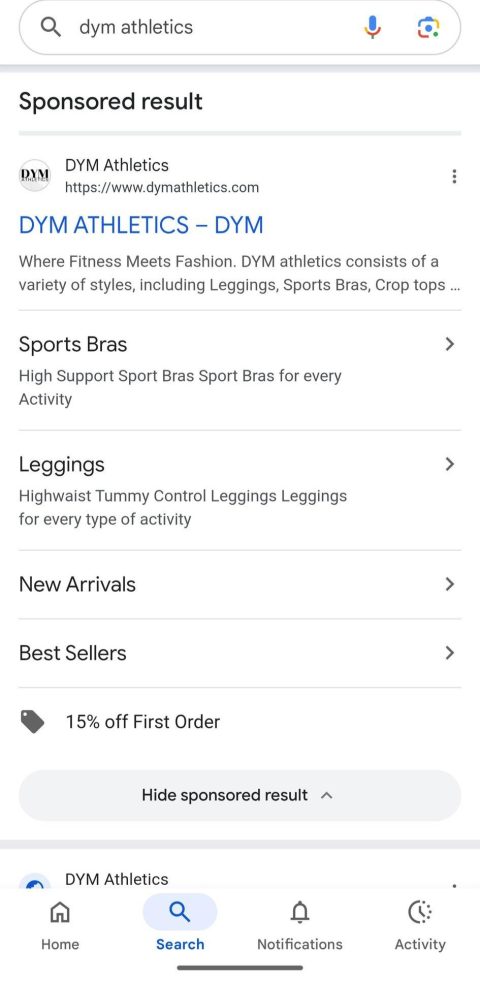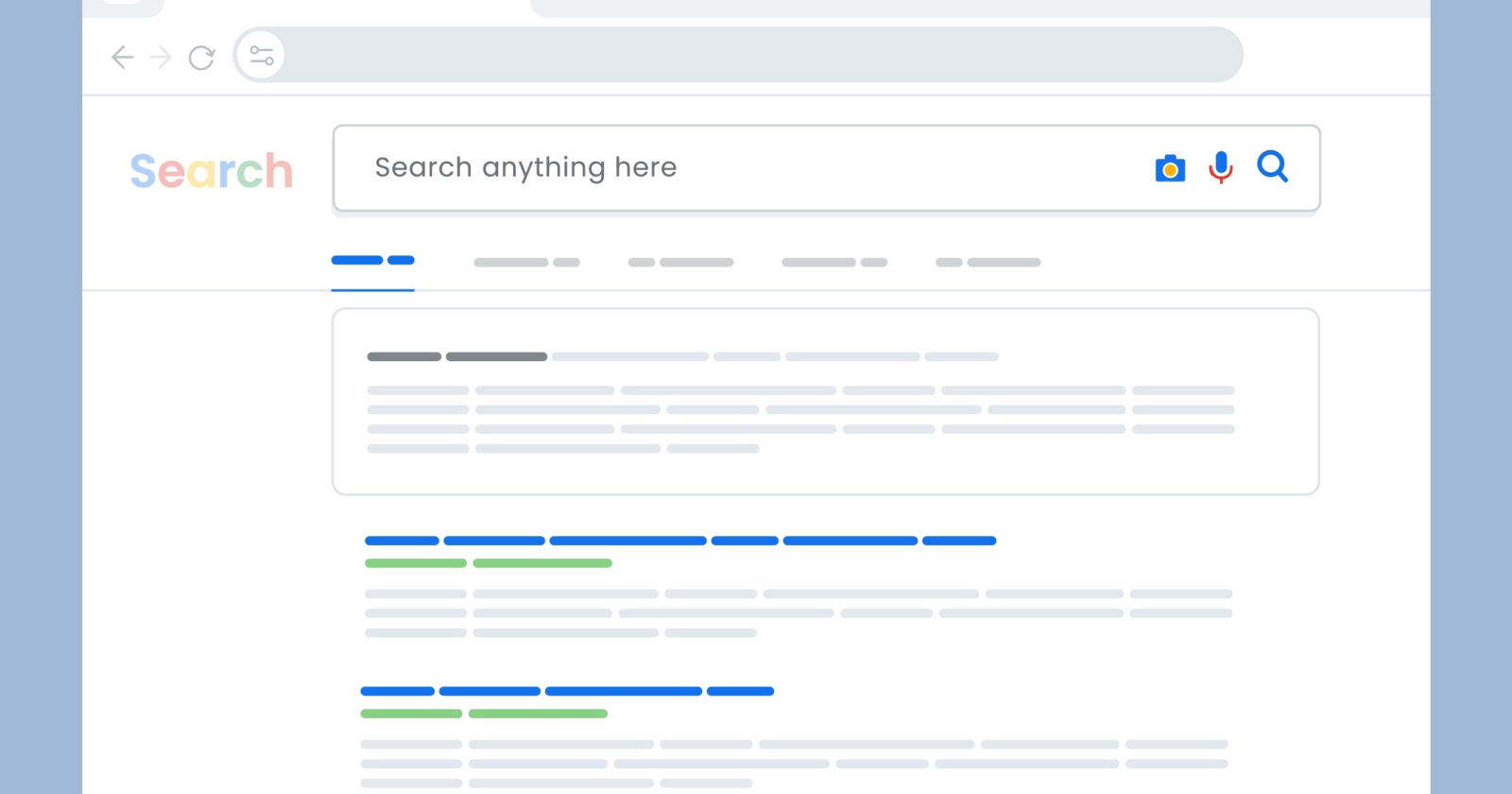Google is rolling out a change to how ads appear in Search, and this time it’s focused on clarity and user control.
Text ads will now be grouped under a single “Sponsored results” label that stays visible as you scroll. In addition, a new “Hide sponsored results” option lets users collapse the entire ad block with one click.
This update doesn’t change how ads are served or ranked, but it does change how they’re presented to users. Even small interface updates can influence how people interact with search results, so advertisers should pay attention to how this evolves over time.
A Look at the New Sponsored Label on Google Search
Previously, each text ad showed a small “Sponsored” label at the top of each ad.
Now, Google is grouping all text ads together with a single header that clearly signals where the sponsored section begins and ends. That label remains visible even if the user scrolls down the page.
While doing a Search in the wild, the new format appeared, even with just one ad:

Google is also extending this approach to other formats. For example, Shopping placements will use a “Sponsored products” label.
On results that include AI Overviews, the sponsored section can appear above or below the AI-generated content, but it will still follow the same grouping and labeling format.
The most noticeable addition is the ability to collapse all sponsored results. Not every user will hide the section, but the option itself introduces a new behavior that didn’t exist before.
Google noted that these updates are rolling out globally to users on both desktop and mobile
Why This Matters to Advertisers
From a performance perspective, the underlying mechanics are unchanged. Bidding, Quality Score, ranking, and the maximum number of ads (up to four in a block) all remain the same.
That said, grouping ads together can influence how users perceive them.
When ads are visually separated from organic listings, the difference between the two becomes more intentional.
Users who skim results may pause and decide whether to interact with the sponsored block at all. For lower-intent searches, this could result in fewer casual clicks. For higher-intent queries, the impact may be minimal.
This puts more pressure on the quality of the ad itself. Clear value propositions, relevant messaging, and strong alignment with search intent will matter even more.
Ranking at the top will still be valuable, but visibility alone won’t guarantee engagement if users are more aware of what they’re clicking.
While the update is primarily visual, advertisers should keep an eye on performance once it fully rolls out across mobile and desktop. A few areas to watch include:
- Changes in CTR or Impression-to-Click patterns
- Differences in engagement based on query intent
- Any vertical-specific impact where users are more likely to hide ads
Early shifts may be small, but trends could emerge over time as users adjust to the new layout.
Why Did Google Make This Change?
Google notes that these changes were driven by user testing and feedback. The goal is to create a more consistent and transparent experience across all ad formats. It also reflects increasing expectations around clarity in search results as AI-generated content becomes more common.
By making it easier to recognize sponsored content, Google is signaling that paid placements can be both visible and trustworthy, as long as they’re clearly labeled.
This approach may help maintain long-term confidence in search results as the interface continues to evolve.
Moving Towards a More Transparent SERP
Google’s update reinforces a larger shift: how ads appear on the page is becoming just as important as where they appear.
The auction logic and placement limits remain the same, but the experience around ads is becoming more clearly defined for users.
As presentation evolves, it’s reasonable to expect user behavior to follow. Some people will ignore the change. Others may start to be more selective about when they engage with ads.
This puts more weight on relevance, clarity, and value in the message itself.
Advertisers don’t need to overhaul their campaign structure or bidding strategy because of this change. Instead, the focus should be on tightening creative quality, aligning closely with intent, and paying attention to early performance shifts.
Even if the impact is subtle at first, updates like this often lead to gradual behavior changes over time.
Search has always been a balance between visibility and trust. Advertisers who adapt early and continue to prioritize useful, high-quality messaging will be in the best position to maintain performance as the SERP continues to evolve.


